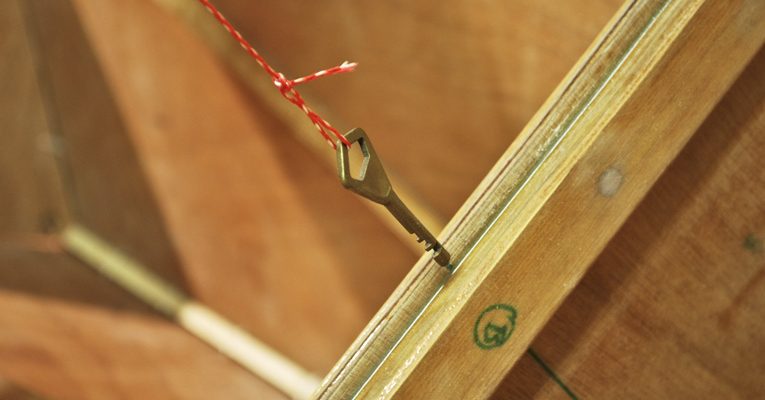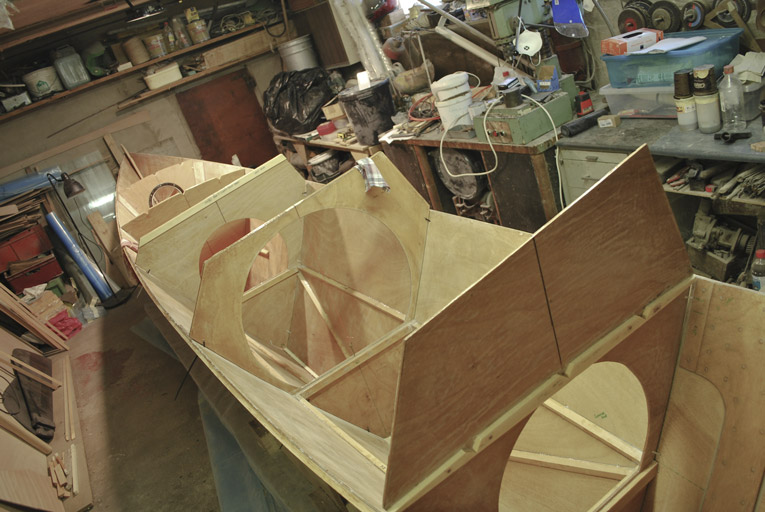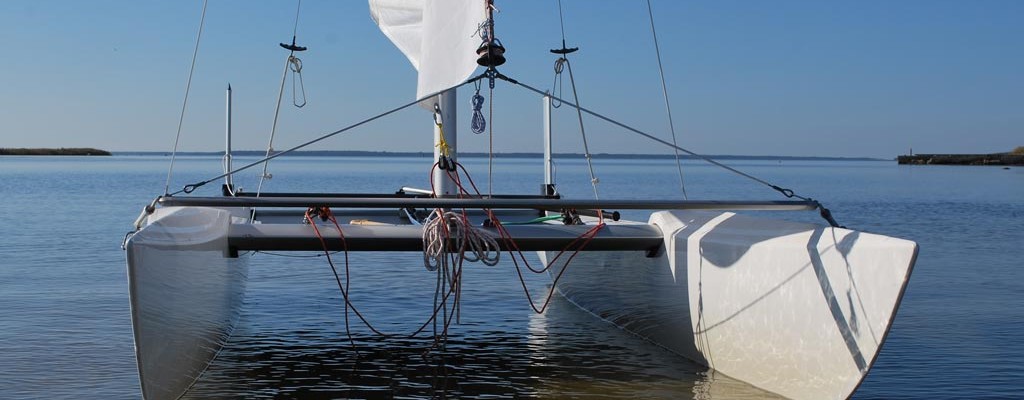
Playing with the paint & sniffing the fumes….
… two part epoxy based Tikkurila Temacoat RM40 serves as primer for the hull, I will let it to set for a few days, then there will be applied two part polyurethane Tikkurila Temadur 20 fas a topcoat. Interiors are already coated with several layers of Temacoat, which is a bit easier to apply in constrict spaces, as it do not go off too quickly after mixing and its a bit more viscose as well, a true virtue considering the situation where painter has to squeeze himself into the rear section of cabin, size of a smaller nightstand, armed with pot of potent smelling paint, flashlight, small brush and watering eyes.

… a fancy DIY knob for main hatch locking system, made of 2 layers 6mm plywood (will see how it works…)

… and little bit of woodwork as well — a base for jib block, made from 2 pieces of oak, clued and screwed onto the hull.
I decided to abandon jib traveler and went for barber haulers.
Now I need one dry and warm day for painting the topsides and another for hull sides…





